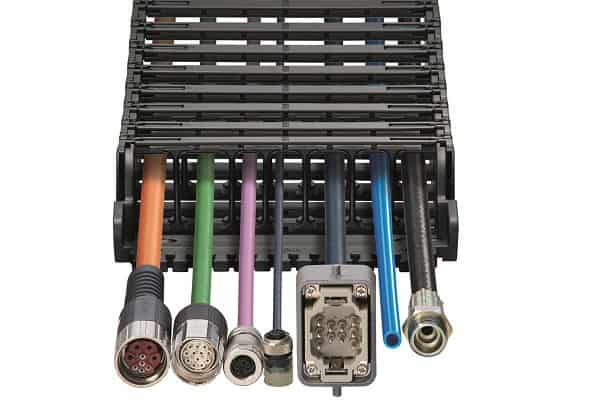Igus releases technical paper on cable management mistakes
Igus has put together a list of seven common cable management mistakes that contractors may not know they’re making, as well as how to avoid them.
Simple considerations in the beginning can prevent large problems later on, such as loss of continuity, insulation damage, mechanical deformation or EMI problems.
ADVERTISEMENT
Modern cable carriers can withstand longer travels, faster speeds and higher loads than ever before, meaning that certain rules of thumb, such as filling only as much as 80% of a cable carrier’s cross section, have become outdated.
Such advances in automation technology means there could be cable management mistakes you don’t know you’re making. These include:
- Lack of interior separation
Interior separators and shelves are crucial for keeping similar cables and hoses compartmentalised. When separation is not used, cables can cross over one another and become tangled. Cables and hoses with incompatible jackets should also be separated.
- Uneven distribution of weight
Cables and hoses need to be laid inside a cable carrier so they are able to move freely without exerting tensile forces along the radius. Unevenly distributed weight can make a cable carrier too heavy on one side, disrupting movement and causing the carrier to tilt.
- Overfilled cable carrier
Overfilling a cable carrier can obstruct free movement and cables that don’t have room to move properly will interfere with the movement of the cable carrier. Additionally, if cables become caught on one and another and bind then jacket abrasion can be significantly increased.
- Lack of proper strain relief
There is no way to control the length of the cable inside the carrier without the proper strain relief. As the cable carrier moves back and forth, the cable will pull into the carrier and bunch up, causing premature system failure.
- Not installing cables along the neutral axis
Cables with correct strain relief will position in the natural axis of a cable carrier but the cables should not be pulled right against the inner radius or pushed against the outer radius.
- Dissimilar jacket types placed next to each other
If the outer jacket of cables/hoses have different coefficients of friction and rub against one another, the harder, more resilient material will gradually wear down the softer jacket. This will lead to failure so it is not recommended to mix PVC and PUR jackets. If jacket materials need to be mixed in the same carrier, then ensure that jacket materials are rated for cable carrier use.
- Improper cable carrier length
If the cable carrier’s length is miscalculated then the full range of movement could be compromised and pulled or stretched cables can result in conductor breakage.
For more information, visit Igus’ Tech Talk overview at https://www.igus.com/wpck/8234/cable_management_mistakes.
-
ADVERTISEMENT
-
ADVERTISEMENT


